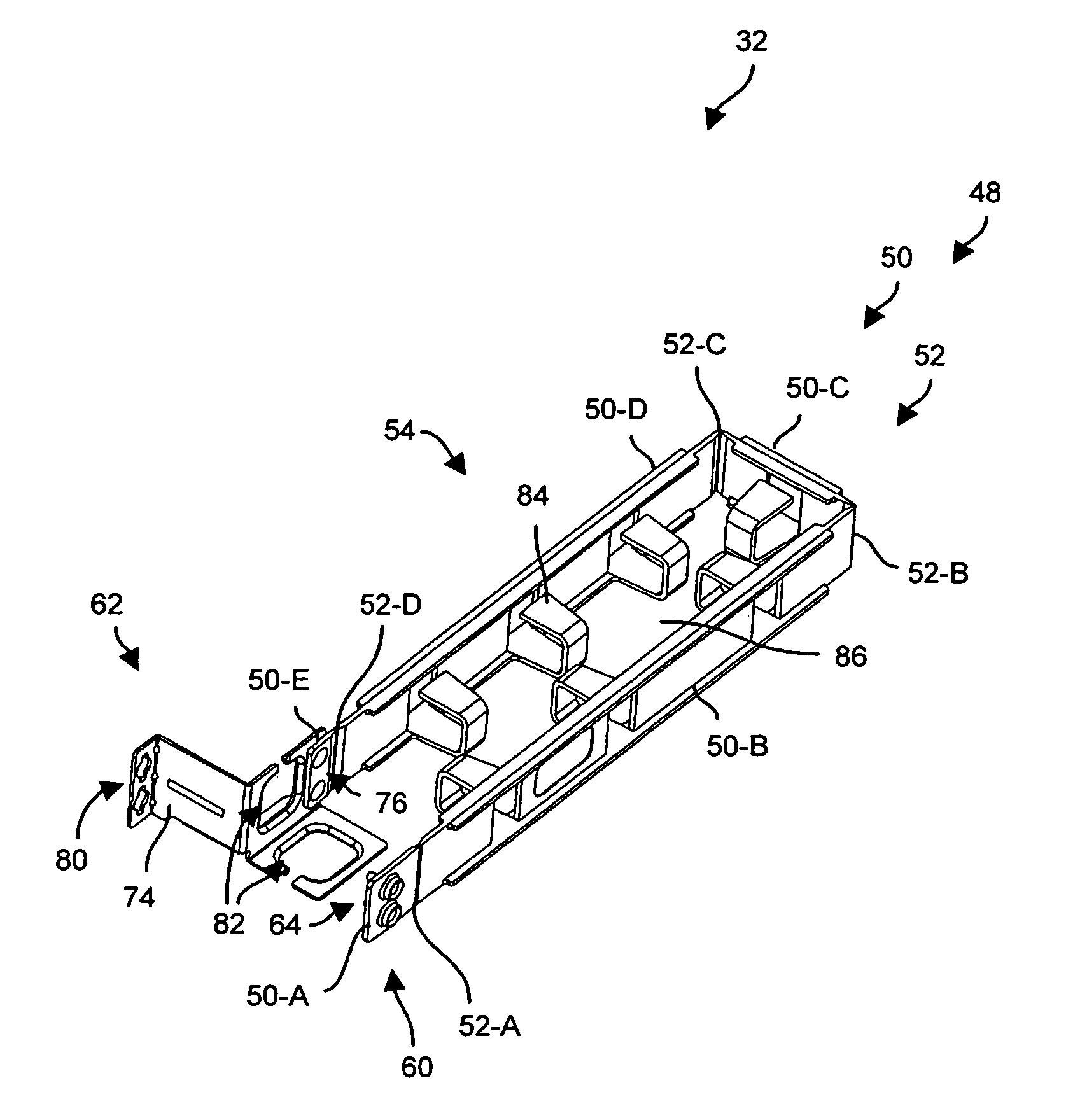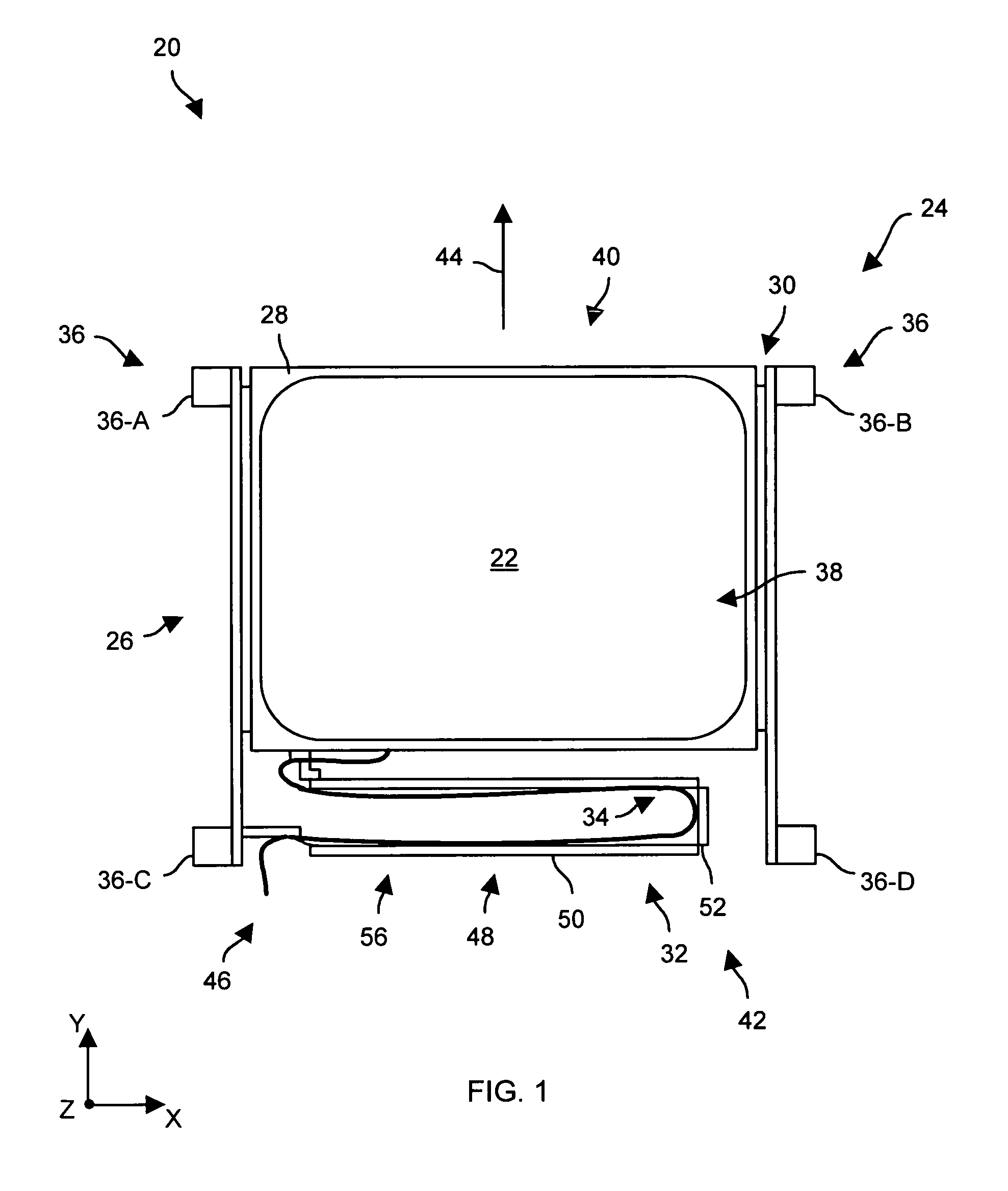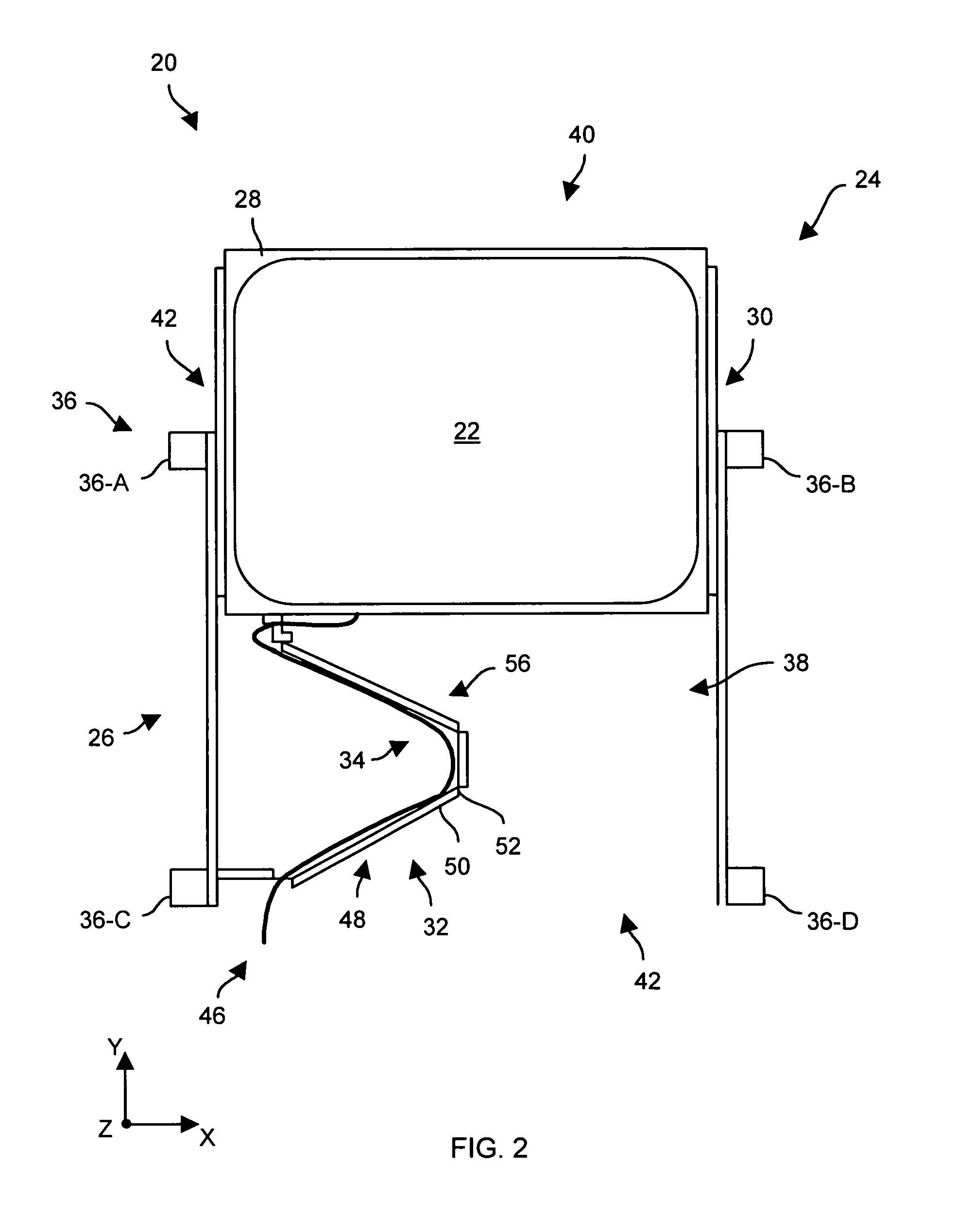Techniques for controlling movement of a set of cables
a technology of moving cables and cables, applied in the field of techniques, can solve the problems of increasing the cost of assembling the final electronic system, tedious and meticulous opening and closing of technicians, and the cost of the metallic cable carrier that is difficult to manufacture, and achieves the effect of reliable and inexpensive process
- Summary
- Abstract
- Description
- Claims
- Application Information
AI Technical Summary
Benefits of technology
Problems solved by technology
Method used
Image
Examples
Embodiment Construction
[0020]Embodiments of the invention are directed to techniques for guiding movement of a set of cables (i.e., one or more cables) in an electronic system using an arm member having a set of support portions and a set of hinges which are integrated together to form a contiguous, unitary body (e.g., a solid piece of homogenous plastic material). Utilization of such an arm member within the electronic system provides controlled movement of the set of cables but enables a reduction in manufacturing costs (e.g., less parts and time required for assembly) and an improvement in reliability (e.g., less potential points of failure).
[0021]FIGS. 1 and 2 show cross-sectional top views of an electronic system 20 which is suitable for use by the invention. The electronic system 20 includes, among other things, electronic equipment 22 (e.g., circuitry for a data storage system, a general purpose computer, network equipment, individual electronic devices, specialized electronics, combinations thereo...
PUM
 Login to View More
Login to View More Abstract
Description
Claims
Application Information
 Login to View More
Login to View More - R&D
- Intellectual Property
- Life Sciences
- Materials
- Tech Scout
- Unparalleled Data Quality
- Higher Quality Content
- 60% Fewer Hallucinations
Browse by: Latest US Patents, China's latest patents, Technical Efficacy Thesaurus, Application Domain, Technology Topic, Popular Technical Reports.
© 2025 PatSnap. All rights reserved.Legal|Privacy policy|Modern Slavery Act Transparency Statement|Sitemap|About US| Contact US: help@patsnap.com



